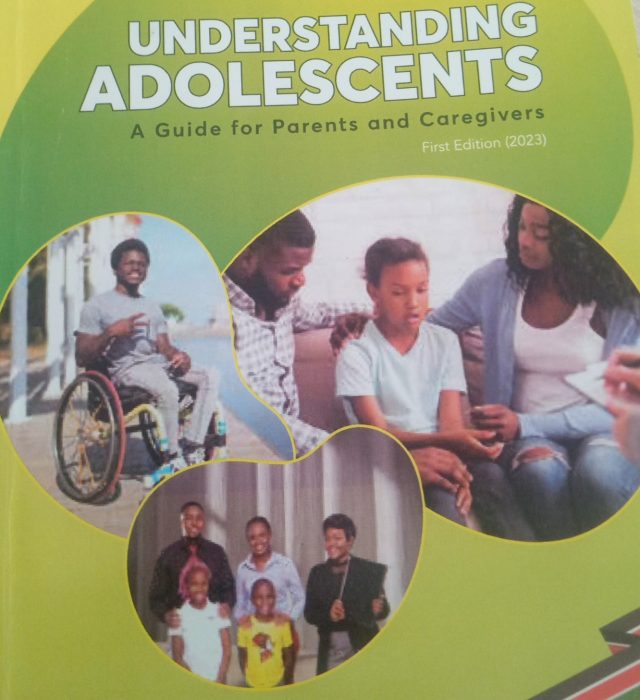Ministry of Health set to unveil adolescents’ guide for parents and caregivers – KBC
Ministry of Health set to unveil adolescents’ guide for parents and caregivers Kenya Broadcasting Corporation


The Ministry of Health’s Guide on Adolescent Sexual and Reproductive Health
Introduction
The Ministry of Health is finalizing the development of a guide called “Understanding Adolescents: A Guide for Parents and Caregivers.” This guide aims to provide comprehensive and accurate information on adolescent sexual and reproductive health in response to emerging threats faced by this age group.
Sustainable Development Goals (SDGs)
- Goal 3: Good Health and Well-being
- Goal 4: Quality Education
- Goal 5: Gender Equality
- Goal 10: Reduced Inequalities
Background
The guide aligns with the National Reproductive Health Policy (2022 – 2032), which aims to improve sexual and reproductive health outcomes in the country. The Ministry recognizes the significant and far-reaching consequences of insufficient access to comprehensive and accurate information about Adolescent Sexual and Reproductive Health (ASRH) for parents and caregivers.
Current Challenges
Despite progress in reducing the national prevalence of Female Genital Mutilation (FGM), teenage pregnancy, and gender-based violence, concerns remain over the current rates. The Kenya Demographic and Health Survey (KDHS) 2022 key indicators report reveals that teenage pregnancy rates remain at 15 percent in the country.
Development Process
Mary Magubo, the Social and Behavioural Change and Communications Coordinator at the Division of Reproductive and Maternal Health, states that the guide has benefited from a wealth of knowledge drawn from various stakeholder groups.
Guide Content
- Adolescent sexual and reproductive health
- Communicating with adolescents
- Career choices
- Social media
- Harmful practices
- Nutrition
- Personal hygiene and grooming
- Mental health
- Life skills
SDGs, Targets, and Indicators
1. Which SDGs are addressed or connected to the issues highlighted in the article?
- SDG 3: Good Health and Well-being
- SDG 4: Quality Education
- SDG 5: Gender Equality
- SDG 10: Reduced Inequalities
- SDG 16: Peace, Justice and Strong Institutions
2. What specific targets under those SDGs can be identified based on the article’s content?
- SDG 3.7: By 2030, ensure universal access to sexual and reproductive health-care services, including for family planning, information and education, and the integration of reproductive health into national strategies and programs.
- SDG 4.7: By 2030, ensure that all learners acquire the knowledge and skills needed to promote sustainable development, including through education for sustainable development and sustainable lifestyles, human rights, gender equality, promotion of a culture of peace and non-violence, global citizenship, and appreciation of cultural diversity and of culture’s contribution to sustainable development.
- SDG 5.6: Ensure universal access to sexual and reproductive health and reproductive rights as agreed in accordance with the Program of Action of the International Conference on Population and Development and the Beijing Platform for Action and the outcome documents of their review conferences.
- SDG 10.2: By 2030, empower and promote the social, economic, and political inclusion of all, irrespective of age, sex, disability, race, ethnicity, origin, religion, or economic or other status.
- SDG 16.2: End abuse, exploitation, trafficking, and all forms of violence against and torture of children.
3. Are there any indicators mentioned or implied in the article that can be used to measure progress towards the identified targets?
- Indicator for SDG 3.7: Percentage of adolescents with access to comprehensive and accurate information about sexual and reproductive health.
- Indicator for SDG 4.7: Percentage of parents and caregivers equipped with relevant knowledge on adolescent sexual and reproductive health.
- Indicator for SDG 5.6: Percentage of adolescents with access to sexual and reproductive health services.
- Indicator for SDG 10.2: Percentage of parents and caregivers providing guidance responsive to the needs of today’s adolescents.
- Indicator for SDG 16.2: Percentage reduction in teenage pregnancy rates.
SDGs, Targets, and Indicators Table
| SDGs | Targets | Indicators |
|---|---|---|
| SDG 3: Good Health and Well-being | SDG 3.7: By 2030, ensure universal access to sexual and reproductive health-care services, including for family planning, information and education, and the integration of reproductive health into national strategies and programs. | Percentage of adolescents with access to comprehensive and accurate information about sexual and reproductive health. |
| SDG 4: Quality Education | SDG 4.7: By 2030, ensure that all learners acquire the knowledge and skills needed to promote sustainable development, including through education for sustainable development and sustainable lifestyles, human rights, gender equality, promotion of a culture of peace and non-violence, global citizenship, and appreciation of cultural diversity and of culture’s contribution to sustainable development. | Percentage of parents and caregivers equipped with relevant knowledge on adolescent sexual and reproductive health. |
| SDG 5: Gender Equality | SDG 5.6: Ensure universal access to sexual and reproductive health and reproductive rights as agreed in accordance with the Program of Action of the International Conference on Population and Development and the Beijing Platform for Action and the outcome documents of their review conferences. | Percentage of adolescents with access to sexual and reproductive health services. |
| SDG 10: Reduced Inequalities | SDG 10.2: By 2030, empower and promote the social, economic, and political inclusion of all, irrespective of age, sex, disability, race, ethnicity, origin, religion, or economic or other status. | Percentage of parents and caregivers providing guidance responsive to the needs of today’s adolescents. |
| SDG 16: Peace, Justice and Strong Institutions | SDG 16.2: End abuse, exploitation, trafficking, and all forms of violence against and torture of children. | Percentage reduction in teenage pregnancy rates. |
Copyright: Dive into this article, curated with care by SDG Investors Inc. Our advanced AI technology searches through vast amounts of data to spotlight how we are all moving forward with the Sustainable Development Goals. While we own the rights to this content, we invite you to share it to help spread knowledge and spark action on the SDGs.
Fuente: kbc.co.ke

Join us, as fellow seekers of change, on a transformative journey at https://sdgtalks.ai/welcome, where you can become a member and actively contribute to shaping a brighter future.








